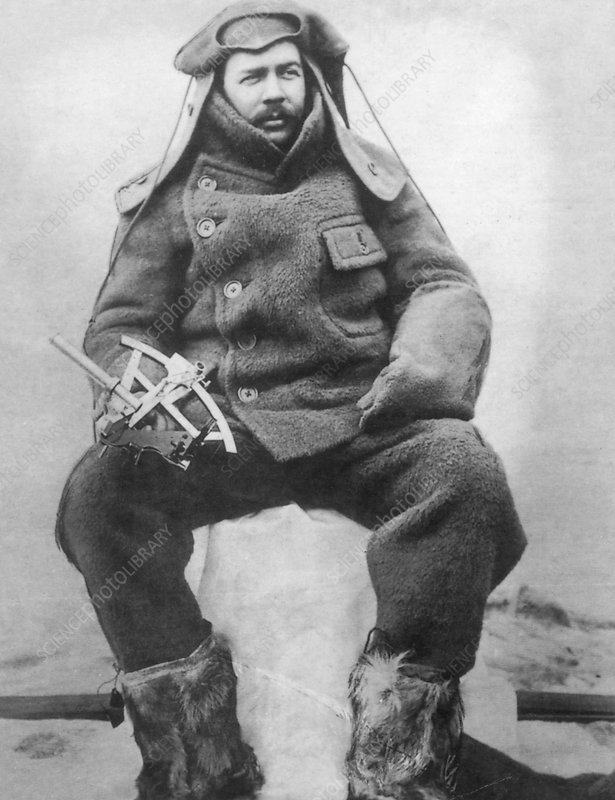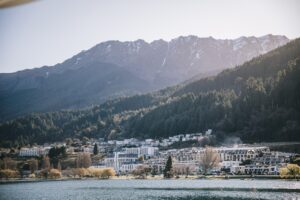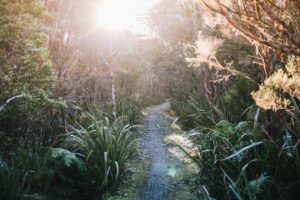Scott. Shackleton. Hillary.
All synonymous with adventure and Antarctica. Of polar exploration. Of courage and inspiration. Of bygone years when there were still unchartered corners of the world. But there’s one more name that belongs with these giants that has been lost to the common masses – Borchgrevink. Just don’t ask me how to pronounce it.
Norwegian explorer Borchgrevink was the leader of the first expedition to spend a winter in Antarctica – no easy feat, guys. He also claimed to be one of the first people to set foot on the Antarctic content on a Norwegian whaling expedition four years earlier (depending on who you ask, of course, and how you define “discovered”).
Over the years, I’ve shared many stories from Antarctica, with Shackleton being one of my all-time faves and barely any about Scott, petty, I know. I’m Team Shackleton through and through; he was one tough BAMF. Anywho, modern perceptions aside, the story of Antarctica and its discovery is fascinating, where the truth is more remarkable than fiction.
Explore Antarctica from home with an interactive AR app for iPhone and Google Play

Southern Cross Antarctic Expedition 1898-1900 Carsten Borchgrevink, leader of the Southern Cross Expedition. ca 1898
L Bernacchi Collection, Canterbury Museum.

Southern Cross Antarctic Expedition 1898-1900 Meal on the Ice. ca 1898
L Bernacchi Collection, Canterbury Museum.
It’s not been that long since Antarctica earned a concrete place on the world map.
Since antiquity, people believe that a place called the Terra Australia Incognita (aka a great unknown southern land) must exist. Why? To balance out the landmass in the northern hemisphere. Oh, ancient logic! That’s cute.
For centuries explorers looked for this unknown land but never found it. One of the most well-known attempts was by none other than Captain Cook himself on the same voyage when he ended up in New Zealand. While they did head into the Antarctic Circle itself, they never found any land.
Can you even imagine sailing into the unknown like this? With no idea of when and where you might end up? Or even if you might make it home again.
Two hundred plus years later, and Antarctica remains elusive in our collective imagination.


Here’s a not-too-secret secret about me.
For years, I’ve been obsessively digging through journals, biographies, and stories related to my favorite place in the world – ANTARCTICA. I’ve got the polar bug big time! Thrilling and wild, their stories of courage and survival, to journey into the unknown inspired by a deep curiosity, are themes I’ve been drawn to my whole life. I even host my trips to Antarctica.
I dream of one day being able to follow in the footsteps of the giants from the heroic age of Antarctic exploration. Shackleton. Scott. Hillary. Borchgrevink. See the first huts built in Antarctica as their bases. Watch the same penguin colonies and look out for whales.
But will I ever get there? Will any of us ever get there? Or perhaps the better question might be, even if we could visit, should we?


The Mrs Sam’s coal range was the heart and heat of Shackleton’s Nimrod hut at Cape Royds. Made entirely from wood, the hut has ground cork insulation in the walls.
Jana Stefan, Antarctic Heritage Trust.

Scott’s Terra Nova hut is built on the beach at Cape Evans. Mt Erebus looks close, even though it is 24 km away.
Lizzie Meek, Antarctic Heritage Trust.
You see, most of these iconic historic sites in Antarctica are on the Ross Sea closer to New Zealand. This makes sense since most of these voyages departed from right here in Lyttelton, where I live (Woah, serendipitous or what?)
Most tourism trips down to the ice go from South America to the Antarctic Peninsula. This is how I first traveled to Antarctica. Besides being geographically closer (to South America and thus, civilization), the Peninsula is considered more attractive with its vast wildlife populations, big mountains and glaciers, and accessibility. These trips generally run for about ten days to 2 weeks. In contrast, if you go down from New Zealand, you’re looking to be away for around a month (Heritage Expeditions are one of the only companies that take people down to the Ross Sea side of Antarctica). More time at sea = a lot more dollars spent.
McMurdo Station (the US base) and Scott Base (the NZ base) are generally accessed from New Zealand via flights in the summertime on the Ross Sea side and are closer to these historic huts. And for the record, I would sell my soul for a spot on one of these flights. If you know someone who knows someone, hit. Me. Up.
Fragile and really freaking hard to get to, these historic huts are not places we can get to in person. Until now. Dun dun dun. Can you see where I’m going with this?



Scott’s Discovery hut at Hut Point. Josiah Wagener, Antarctic Heritage Trust
At the bottom of the world, the incredible Antarctic Heritage Trust looks after these historic huts and artifacts left behind by the great explorers. World leaders in cold-climate heritage conservation, they work tirelessly to inspire the spirit of exploration and protect this powerful place and the legacy it contains.
There are over 20,000 artifacts and several huts left behind by the explorers. Antarctica is unique in that it’s a place that naturally preserves and conserves with its dry cold climate (polar desert) while at the same time enduring one of the world’s harshest climates. Thanks to the tremendous amount of work undertaken by the AHT in preserving these artifacts and spaces, they have been saved as a reminder of some of the greatest moments in polar exploration. While so many artifacts have been lost to history, you can (theoretically) walk inside the Antarctic huts built by the first explorers, and they look as if they only just left.
So far, the Antarctic Heritage Trust conservation team has restored Scott’s huts at Cape Evans and Hut Point, Shackleton’s hut at Cape Royds, and Hillary’s Hut at Scott Base. The restoration of Borchgrevink’s Cape Adare huts is the Trust’s current focus, although Covid constraints prevent the team from being able to get there this season.

Caption and Credit: Borchgrevink’s Hut at Cape Adare. Nigel Watson, Antarctic Heritage Trust
Borchgrevink’s Cape Adare huts are incredibly important if not only because they are the only remaining example of humanity’s first building on any continent. Let that sink in for a minute.

Hillary’s Trans-Antarctic Expedition (TAE) hut at Pram Point.
Tim McPhee

Shackleton’s Nimrod Expedition hut at Cape Royds.
Antarctic Heritage Trust
The Antarctic Heritage Trust looks after over 20,000 polar artifacts down in Antarctica.
As they conserve and maintain the historic huts, they also find many significant discoveries. This includes a 114-year old whisky under Ernest Shackleton’s hut, a notebook from a surgeon, and photographer Murray Levick at Scott’s Cape Evans hut as well as lost Ross Sea Party photographs. And let’s not forget the world’s most famous century-old fruitcake.
Personally, I’m totally against fruitcake in any form, but I’ll make an exception here. Though, you don’t need me to point out the irony that a fruitcake was one of the provisions left behind.

Conserved fruit cake. Antarctic Heritage Trust
One way that the Antarctic Heritage Trust is amplifying the history of this incredible place is by creating a FREE Augmented Reality app you can download that allows you to explore Antarctica and these places from your home.
I’ve followed along for the past couple of years as they have worked tirelessly to bring the spirit of exploration and the stories from these historical sites to us here in New Zealand. They are championing Augmented Reality to bring these artifacts to life and share them with the world. In collaboration with Tim Handfield of Handfield & Bell Digitising Consultants, some of these items left behind by the explorers were scanned and then turned into augmented reality by Staples VR.
Seven of the first Antarctic artifacts are brought to life within the Trust’s Augmented Reality app for you to play with and explore.

Antarctic Heritage Trust

Antarctic Heritage Trust
Whenever I read and learn about the great polar explorers, I’m constantly struck by the thought of how the hell did they do that? I can’t even imagine it! But now, I can!
Personally, I spent hours getting lost in the Antarctic Heritage Trust AR app. As a reader and a writer, so much of what I’ve learned about Antarctica has been through books. By actively interacting with artifacts on my phone that look so real, narrated in a way that whisks you away to the bottom of the world. Snuggled up on my sofa with my puppy, I can really get a feel for how these guys made these wildly famous journeys possible. Words and imagination can only take you so far, but with the extraordinary quality of photos and storytelling within the app, you’re instantly transported to a place few have ever set foot on.
And honestly, how did they survive on that food? Hoosh? Hard pass.


I’ve been a big advocate of using tech for good.
I’m also a big advocate for the conservation and preservation of places and species for future generations. A constant gap I’m always trying to bridge is allowing us to see and experience areas and biodiversity but also equally protecting it at the same time. I want us all to become ambassadors for the Antarctic world. And I hope we can all experience it one day. But we need to do it right, get it right. And for now, the best way is through conservation, limited access, and then exploring these places through the powerful digital technology we have available.
Let’s keep their stories alive! And say no to fruitcake!
Explore Antarctica from home with an interactive AR app for iPhone and Google Play
Have you downloaded the Antarctic Heritage Trust AR app yet and had a play? Have you experienced anything like this before? Share!

Many thanks to the NZ Antarctic Heritage Trust for inviting me along to explore Antarctica via their AR app. Like always, I’m keeping it real. All opinions are my own like you can expect less from me!
The post Exploring Antarctica from your sofa – an AR journey to the end of the world appeared first on Young Adventuress.




